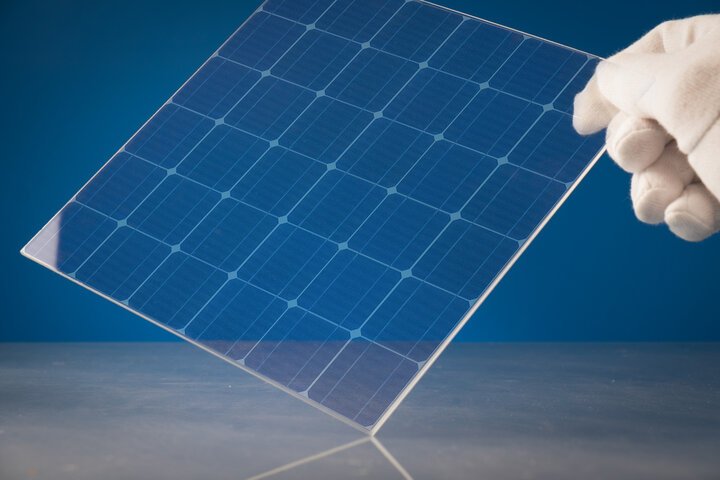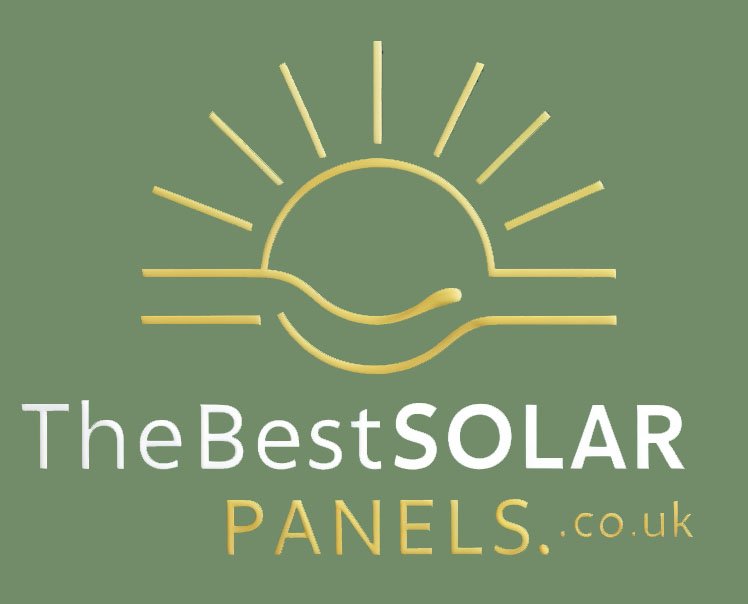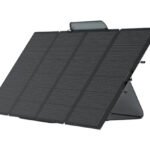Transparent solar panels: the futuristic technology that is already a reality. Imagine windows that not only let in natural light but also capture and convert that light into clean electricity. In this article, we will explore how these innovative panels transform solar integration into modern architecture and create new possibilities in the world of renewable energy.

What are transparent solar panels?
They are devices capable of capturing and converting the sun’s energy into electricity, just like traditional panels. The difference is that their surface is translucent. That is, it allows you to see through it. In fact, its appearance is very similar to that of glass.
Nowadays, there are partially transparent solar panels. Made from materials that let in some light, but not all. Then, there are completely transparent solar panels, which allow us to see what is behind them without any impediment.
They are a revolution because, as you have probably already thought, they can be used as windows. Can you imagine how much this multiplies the potential for generating photovoltaic energy? Although transparent solar panels are a very new technology that is still in full development, there is no doubt that they are the future of photovoltaic energy, so keep an eye on them.
How transparent solar panels work
Solar panels are devices that can convert the sun’s energy into electricity. So, this is exactly what transparent photovoltaic panels do. They are made from a solar cell that can absorb light without darkening. This is what gives them their characteristic transparency.
The main difference between opaque solar panels and translucent solar panels is that the former are capable of capturing all light waves, both visible and invisible. In the case of transparent panels, these only absorb infrared and ultraviolet wavelengths, the invisible waves. The starting point for this technology has been the transparent solar concentrator developed at Michigan State University. With this, it was possible to convert a window into a photovoltaic cell, so that it ended up working as a solar panel. From there, new materials have been developed that will mark the new era of photovoltaic energy:
- Transparent conductive oxides: They allow light to pass through them at the same time as they conduct electricity.
- Organic solar cells: They are semi-transparent and can offer different levels of transparency.
As we said before, this is a technology that is in full development and is still expensive, but it will soon become much more affordable. Sooner than you imagine, we will see transparent solar panels manufactured on demand, adjusted to the measurements, shapes, materials and colours that each user wants.
Applications of transparent solar panels
The main purpose of translucent photovoltaic panels is to generate electricity. Also, some systems already integrate energy storage solutions for later use. The opaque designs we use today do not let light through. So, we cannot see through them. That is why we use them on roofs and terraces, where they do not cause a nuisance. However, transparent models have the potential to be present in many places.
Solar windows
The panel can completely replace the window or consist of a covering installed on top of it. So the windows can become elements that contribute to the generation of energy in all types of homes. In this way, they will contribute to energy savings and to taking care of the environment.
Heated swimming pools
A pool cover made from transparent solar panels can help obtain the energy consumed to keep the installation at an optimal temperature.
Greenhouse structures
In the field, using these panels on the roofs of greenhouses allows farmers to obtain energy for their activity. At the same time, the plants would receive the amount of natural light they need.
Solar-Charged Electronic Screens and Mobile Devices
Transparent solar panel technology is not limited to buildings. Research is being done into the possibility of integrating this technology into electronic screens and mobile devices. Imagine a phone that charges automatically while exposed to sunlight or a tablet whose screen not only displays information but also converts solar energy into usable electricity.

Advantages of Transparent Solar Panels
Pros
- Improved Aesthetics and Sustainable Design: One of the main advantages of transparent solar panels is their ability to improve the aesthetics of buildings and spaces. The possibility of integrating solar panels almost invisibly into windows and facades gives architects and designers a new palette of options to create visually attractive and sustainable structures.
- Contribution to Energy Self-Sufficiency: Adopting transparent solar panels could lead to energy self-sufficiency on many levels. From homes to skyscrapers, the ability to generate electricity from sunlight reduces the dependence on non-renewable energy sources. This, in turn, could reduce the carbon footprint and mitigate climate change.
- Lower installation cost: They can be integrated into structures that already exist, such as windows. Installing them needs no additional infrastructure, which results in significant cost savings.
- Reduces heat: The panel acts as a thermal barrier, reducing the heat penetrating the building during the summer. On the other hand, some models incorporate protection against UV rays, to protect the interior of the buildings and avoid possible damage to health because of prolonged exposure to the sun.
Disadvantages of transparent solar panels
Cons
- Need for greater maintenance: Being in such exposed places as facades and windows, these panels require more frequent cleaning to maintain efficiency.
- Insufficient efficiency: At the moment, this technology only captures non-visible light waves, so the performance of these panels is lower than that of opaque panels. This could also influence the loss of efficiency they suffer over time.
- Low availability: This technology is so new that, at the moment, there is little availability and its price is high.

Conclusion
Transparent solar panels are the latest revolution in the field of photovoltaics. As research and development continue, the challenges they present may be overcome, which could lead to wider adoption of transparent solar panels and their significant contribution to sustainable energy generation.




Leave a Reply